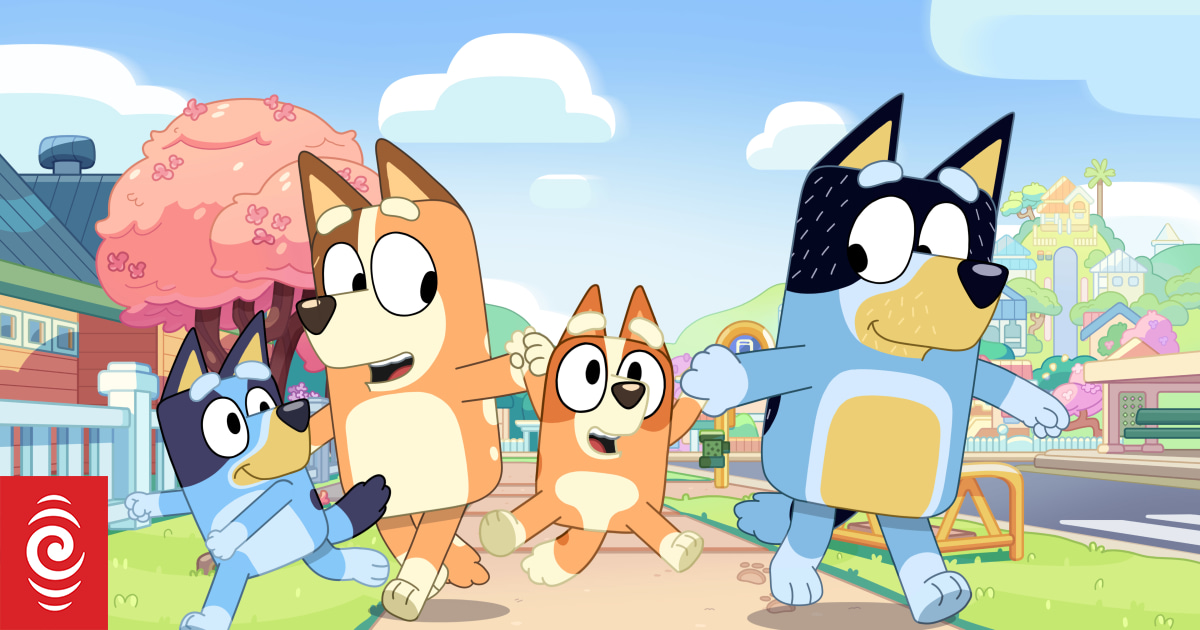World
Bluey Teaches Resilience: Lessons for Kids on Life’s Challenges

Bluey, the animated Australian dog, has emerged as a surprising yet effective resilience coach for children, according to a new study from CQUniversity Australia. The six-year-old character, who lives in Brisbane, captures the hearts of families worldwide while imparting valuable life lessons. The research indicates that Bluey is not merely entertaining children; she provides a framework for dealing with life’s challenges, helping to foster resilience in young viewers.
Resilience encompasses more than just enduring hardships. It involves adapting to setbacks, coping with challenges, and recovering from difficulties. This quality is crucial for healthy child development. Studies show that resilience enables children to manage stress, regulate their emotions, and build meaningful relationships. Moreover, children lacking this skill may face increased risks of anxiety, depression, and inadequate coping mechanisms later in life.
The need for resilience-building is particularly pressing among today’s youth. A national resilience survey conducted in 2023 revealed that over 25% of primary students and nearly 33% of secondary students reported high levels of psychological distress. Early interventions to support resilience can help children develop healthy coping skills before negative patterns become ingrained.
Bluey’s Impact on Child Development
Storytelling through various media—films, books, and television—can effectively teach children how to navigate life’s challenges. Instead of lecturing, these stories often model behaviors such as emotional regulation, problem-solving, and empathy. Animal characters, like Bluey, facilitate engaging learning opportunities, as children are naturally drawn to them.
First airing in 2018, Bluey has become Australia’s most successful children’s program, garnering billions of views globally. Despite its popularity, a systematic examination of how it presents resilience has not been conducted until now. The study analyzed all episodes from seasons one to three, encompassing 150 episodes and totaling 18 hours of content featuring Bluey, her sister Bingo, and their parents, Chilli and Bandit.
Using the Grotberg Resilience Framework, a recognized psychological model, the researchers categorized resilience into three essential components: “I have,” “I can,” and “I am.” The analysis revealed that nearly half of the episodes—specifically 73 out of 150—included a clear resilience message, either as a primary or secondary theme.
Key Findings on Resilience in Bluey
Most resilience moments were facilitated by parents, particularly Bluey’s mother, Chilli. This aligns with the “I have” aspect of resilience, emphasizing the importance of supportive adult figures during challenging times. For instance, in the episode titled “The Show” (season two, episode 19), Bingo drops a breakfast tray and becomes upset. Chilli models emotional coaching by explaining her coping process: “I have a little cry, I pick myself up, dust myself off, and keep going.” This approach teaches children how to acknowledge distress and recover effectively.
In another episode, “Keepy Uppy” (season one, episode three), the children respond to the popping of a balloon with resilience, reflecting disappointment but also emotional regulation. Their reaction—“Well, that was fun”—demonstrates the essence of the “I can” aspect of resilience. Similarly, in “Seesaw” (season two, episode 26), Pom Pom exhibits self-confidence and determination, showcasing the “I am” component.
The research indicated that Bluey addresses nearly all core elements of resilience, including trusting relationships, emotional communication, problem-solving, and empathy. In the episode “Sheepdog” (season three, episode 11), Chilli expresses the need for alone time, a moment that illustrates the importance of self-care and empathy. Bluey mirrors her mother’s words, demonstrating to children that even adults require rest.
While screen time cannot replace real-life relationships, shows like Bluey can serve as effective teaching tools when parents engage with their children during viewing. As parents watch alongside their kids, they can initiate discussions that transform viewing into meaningful conversations. Questions such as “What do you think Bluey felt then?” or “Have you ever felt like that?” can help children reflect on their emotions and learn valuable coping strategies.
In conclusion, Bluey stands as a remarkable example of how children’s programming can contribute to essential life skills. As families continue to enjoy the adventures of this animated pup, they also engage in conversations that nurture resilience, helping children adapt and grow in an increasingly complex world.
-

 World1 week ago
World1 week agoTest Your Knowledge: Take the Herald’s Afternoon Quiz Today
-

 Sports1 week ago
Sports1 week agoPM Faces Backlash from Fans During Netball Trophy Ceremony
-

 Lifestyle1 week ago
Lifestyle1 week agoDunedin Designers Win Top Award at Hokonui Fashion Event
-

 Sports1 week ago
Sports1 week agoLiam Lawson Launches New Era for Racing Bulls with Strong Start
-

 Lifestyle1 week ago
Lifestyle1 week agoDisney Fan Reveals Dress Code Tips for Park Visitors
-

 Politics1 week ago
Politics1 week agoScots Rally with Humor and Music to Protest Trump’s Visit
-

 Health1 week ago
Health1 week agoWalking Faster Offers Major Health Benefits for Older Adults
-

 World2 weeks ago
World2 weeks agoCoalition Forms to Preserve Māori Wards in Hawke’s Bay
-

 Top Stories2 weeks ago
Top Stories2 weeks agoUK and India Finalize Trade Deal to Boost Economic Ties
-

 World2 weeks ago
World2 weeks agoFonterra’s Miles Hurrell Discusses Butter Prices with Minister Willis
-

 World2 weeks ago
World2 weeks agoHuntly Begins Water Pipe Flushing to Resolve Brown Water Issue
-

 Politics2 weeks ago
Politics2 weeks agoPrime Minister Luxon Remains Silent on Foreign Buyers Policy Change









